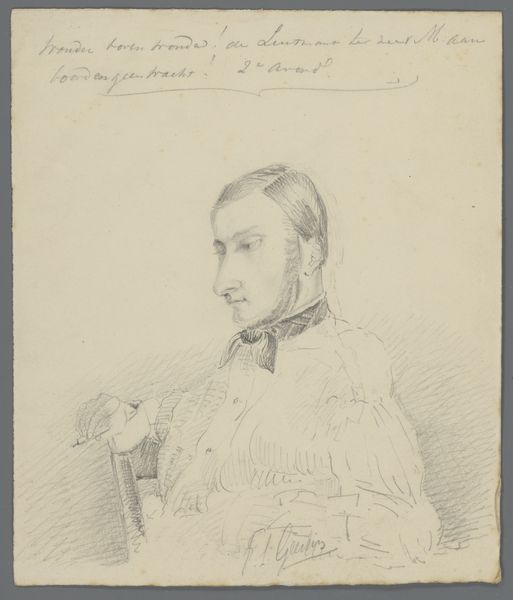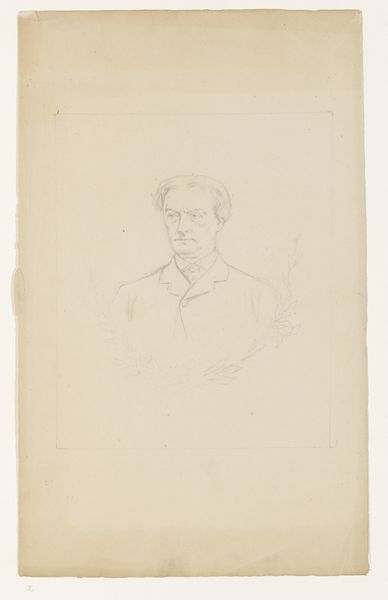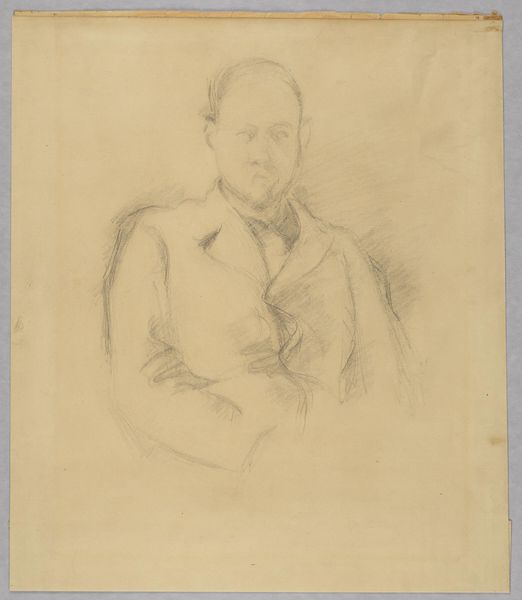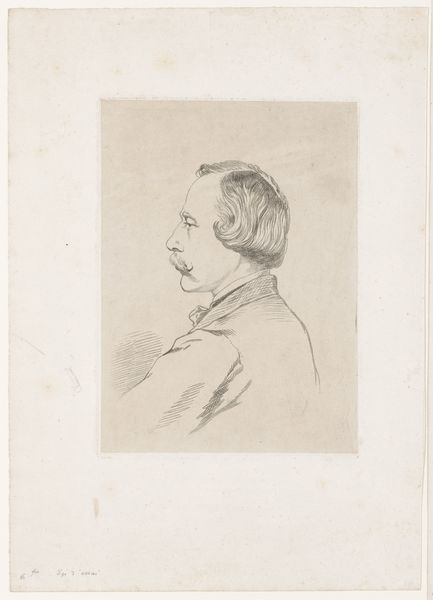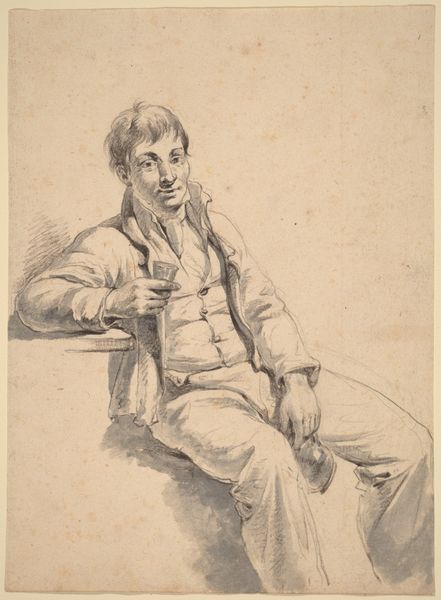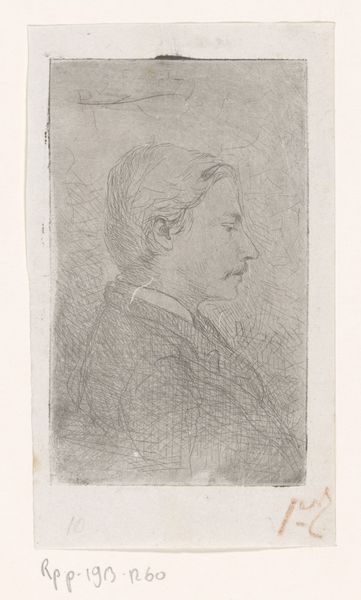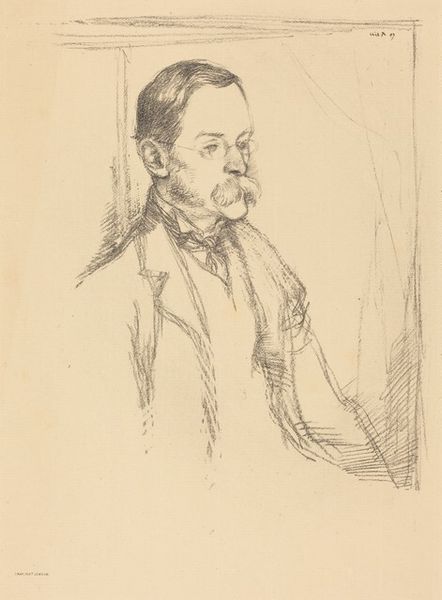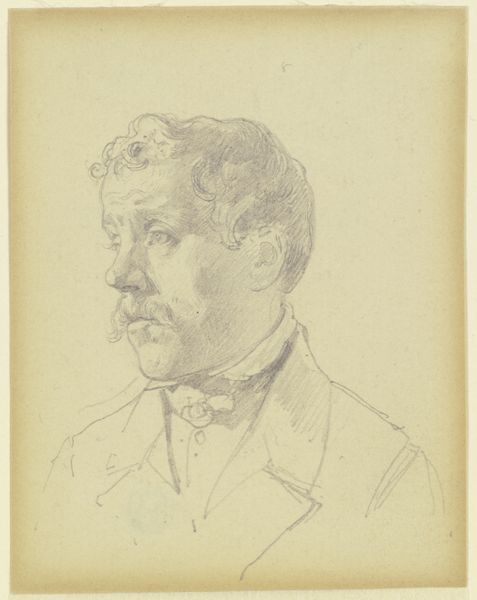
painting, watercolor
#
portrait
#
16_19th-century
#
painting
#
watercolor
#
portrait drawing
#
watercolour illustration
#
realism
Dimensions: height 170 mm, width 127 mm
Copyright: Rijks Museum: Open Domain
Curator: Here we have "Portret van een man," or "Portrait of a Man," an intriguing watercolor portrait dating roughly from 1840 to 1880, attributed to Frederik Lambertus Geerling. What’s your initial reaction? Editor: It feels... unfinished, somehow? Delicate, but tentative. The colors are muted, and there's a visible sketch-like quality to the clothing, especially around the shoulders. Almost feels like we are watching the man fade back into time and dust. Curator: That sense of incompleteness certainly adds to the image's power. The man is rendered with a fair degree of realism, his face capturing an undeniable individuality, even perhaps melancholy. This piece raises questions about the construction of masculinity during this period, and how the societal gaze affected self-representation. Editor: True, and you can see the labor in the portrait itself. Look at the thinness of the washes. Watercolors were accessible and relatively inexpensive; portraits were made and owned by many classes. Was this intended to be a preliminary study? Is it a comment on a type? We don’t see bravura or the ostentatious display of artistic skill. It’s very restrained. Curator: I see it as part of a larger cultural narrative. Was he part of the rising merchant class? His dress— a cross between a professional coat, and his kerchief are very much a working class gesture, yet, it hints at a social mobility sought in the Victorian era. The work becomes a snapshot of a particular moment in social history, reflecting aspiration, and possibly, a little anxiety about one's place in the world. Editor: His dress is so simplified. There is an attention to conveying dignity here. He isn't a gentleman by birth, that much is evident, yet his portrait is concerned with respectability and with situating him on the upper tier of skilled laborers. This reading shifts when you look at the raw and delicate labor. Curator: The lack of detailed rendering opens a space for the viewer to project their own interpretations onto the figure. The portrait could become a stand-in for a variety of social positions and experiences of nineteenth-century men. Editor: Right. We start to consider it, not as just an image, but a document about how someone sought to assert themselves materially. Curator: Exactly, and this piece offers a rich field to explore how identity, gender, and social mobility were performed and understood in 19th-century portraiture. Editor: I now leave thinking of labor both manual and representational, and the intersectionality, not so much a definitive personage.
Comments
No comments
Be the first to comment and join the conversation on the ultimate creative platform.

